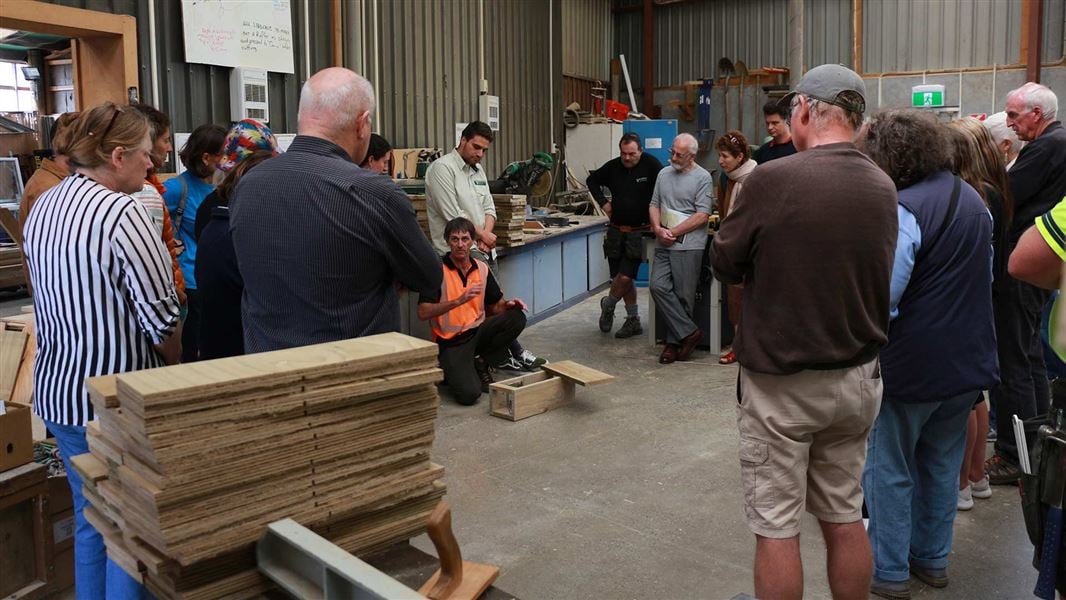Predator Free 2050 aims to eradicate stoats (‘stoats’ includes all three mustelid species of stoats, ferrets and weasels), rats and possums. Because, collectively, these animals inflict the worst damage of all the introduced pests on New Zealand’s plants and wildlife.
Milestone goals
To succeed, we're aiming at a series of milestones and supporting our progression with new tactics and inventive technologies.
By 2025, we will:
- eradicate predators from blocks of at least 20,000 hectares (without the use of fences)
- suppress introduced predators on a further 1 million hectares
- eradicate all predators from offshore island nature reserves
- achieve the capability to eradicate at least one introduced predator.
Tactics to achieve PF2050
Predator Free 2050 is possible if we do things differently.
New Zealand is a world leader in technology and research for conservation. We’ve made progress once thought to be impossible.
Our tactics to achieve Predator Free 2050 are cooperative efforts that:
- connect the efforts of communities, iwi, private businesses, philanthropists, scientists, and government
- distribute funds of $28 million over four years and $7 million per year after to research new predator control technologies
- help coordinate control resources contributed by government, councils, OSPRI, businesses, iwi and communities
- champion projects and campaigns which sustain our threatened species and create knowledge for securing their future
- focus on developing new predator-control tools and techniques, and the forging of necessary networks so we can achieve our goal.
Innovating to succeed
We're creating new partnerships and funding opportunities to support kiwi inventors, businesses and entrepreneurs build the path to a predator free New Zealand. Grants have been awarded to projects with the potential to create jobs across the country and reach national and global markets.
DOCs Tools to Market programme works to ensure the best use of funding from the government to invest in predator control.
Latest innovations
Artificial intelligence (AI), predator detection and bird monitoring
The Cacophony Project brings technology together to detect predators and monitor birds via web applications, backend services and machine learning.
In 2019, the project further developed a thermal camera to become the most sensitive detector equipment of introduced predators available in New Zealand. It's the world's first designed to track small, fast-moving predators and with integrated AI.
During 2016/17, the Cacophony Project also developed sound lures and bird monitoring technologies. The software uses AI to find predators and monitor bird populations. Sound lures like such as predator mating calls help identify target species to remove them.
The project is entirely open source and anyone can contribute.
Long-life lures

Dr Helen Blackie of Boffa Miskell is working to provide a cost-effective long-life baits
Biosecurity experts at Boffa Miskell Ltd have been working to provide a cost-effective alternative to food-based baits that deteriorate quickly in the field.
The lure was created using a solid-state, biodegradable plastic polymer block which is treated to make it long-lasting and attractive to target predators.
Different treatments are being developed and tested to make the block as attractive as fresh bait and able last for months at a time.
Once the development is completed, the blocks will vastly reduce labour costs associated with replenishing baits.
Species detecting and low-labour traps

Spitfire is expected to be used to help stop re-invasions and in remote areas
The species detecting Spitfire trap by Environment and Conservation Technology Limited in Tauranga is a self-resetting toxin delivery device.
It uses different housing designs and spray toxins to control possums or stoats and can be left unattended for a year.
Two new traps have also been developed that reduce the labour resources needed to reset and re-bait trap networks.
The air-powered Hammerforce trap by Hammerforce Ltd is based on a patented Hammer Force Technology® valve system. It can function multiple times per refill with no disposable components.
The Auto Rebait Reset Trap by NZ Autotraps Limited uses a mechanical drive, rechargeable battery and auto-lure dispenser. It can reset 100 times and can be left in the field for up to six months.
System tools to remove a predator species

The Remove and Protect system's transmitter and satellite box monitor and respond to predator reinvasions
In 2019, ZIP began development of their Remove and Protect system for trial.
The system includes an automated lure dispenser, precision rat and stoat trap, electronic transmitter, LoRa-Iridium satellite box and webserver for handling data from remote trapping networks. Funding from 'Products to projects' will enable production and supply of these tools to projects from early-to-mid 2020.
In January 2018, ZIP received funding to develop cost-effective approaches to remove all possums and prevent their reinvasion. The project is also assessing approaches for rat and stoat management.
